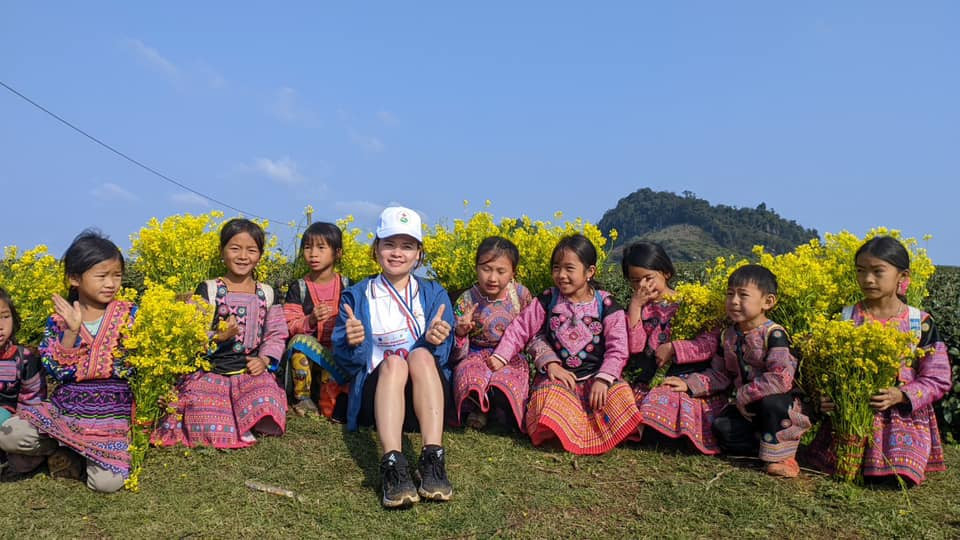
Van Ho district is located in the southeast of Son La province, part of the Moc Chau tourism development area. Van Ho has a fresh climate and many beautiful natural landscapes. The culture of the ethnic groups living in this land is imbued with the unique characteristics of the people of the Northwest region.
Hua Tat village, located next to National Highway 6, is home to H’mong people. Thanks to convenient transportation, in recent years, Hua Tat village has become an experiential tourist destination for domestic and foreign tourists.
Visitors to Hua Tat village can not only admire the natural scenery such as vast fields of white mustard flowers, plum blossoms, peach blossoms, apricot blossoms, buckwheat flowers, and orchards but also experience many cultural features of the indigenous people such as pounding day cakes, planting rice, singing and dancing, and brocade weaving. The unique cultural features of the H’mong people have created attraction for Hua Tat tourism.
Previously, the H’mong community living in Hua Tat only practiced agriculture by growing corn and raising cattle and poultry. In the past few years, the village has begun to develop community tourism. More and more houses in the village have been renovated to have clean restrooms for the homestay business.
Not only attracting tourists with natural landscapes, fresh climate, and traditional culture, Hua Tat village also actively engages in community tourism such as creating green - clean - beautiful landscapes and organizing activities to introduce and promote the culture and products of the local people.
Mr. Trang A Chu is one of the first H’mong people in Van Ho commune to develop community tourism. Mr. Chu said that his family built a homestay in 2015. At first, doing tourism was difficult because few people knew about it, but recently the wave of community tourism has developed, and more tourists know about Hua Tat village.
Many experiential tourism models are developed in the village such as agricultural tourism. People grow fruit trees and vegetables, and tourists can experience working as farmers.
Mr. Trang A Cao, a Hua Tat villager, said that agricultural tourism has helped his family have a stable source of income. Mr. Cao grows strawberries, tomatoes, and other vegetables organically. Thanks to the local advantage of cool weather, fruits and vegetables are available all the year round.
Tourists come to visit and experience farming work in the garden, then they are the ones who buy the products. After their tours, many tourists from Hanoi still continue to buy products from Mr. Cao's garden, and introduce the supplies to their friends.
Thanks to community tourism, Mr. Cao's family and many other households in Hua Tat village have escaped poverty.
Since Hua Tat village became a community tourism destination, local households have invested in accommodation services. The village currently has 7 homestays which are designed with the cultural identity of the H’mong people but still have modern features suitable for tourists.
Hua Tat village currently has only 5 poor households. The local government continues to mobilize ethnic people to develop tourism and promote local products towards the goal of sustainable poverty reduction.
Van Ho district has attracted 8 large-scale investment projects in high-end hotel and resort systems, with a total capital of 452 billion VND. By September 2023, the district has 12 motels and resorts, 17 community motel businesses, and 6 tourism service businesses.